Trends Assessing Neuromuscular Fatigue in Team Sports: A Narrative Review
Abstract
:1. Introduction
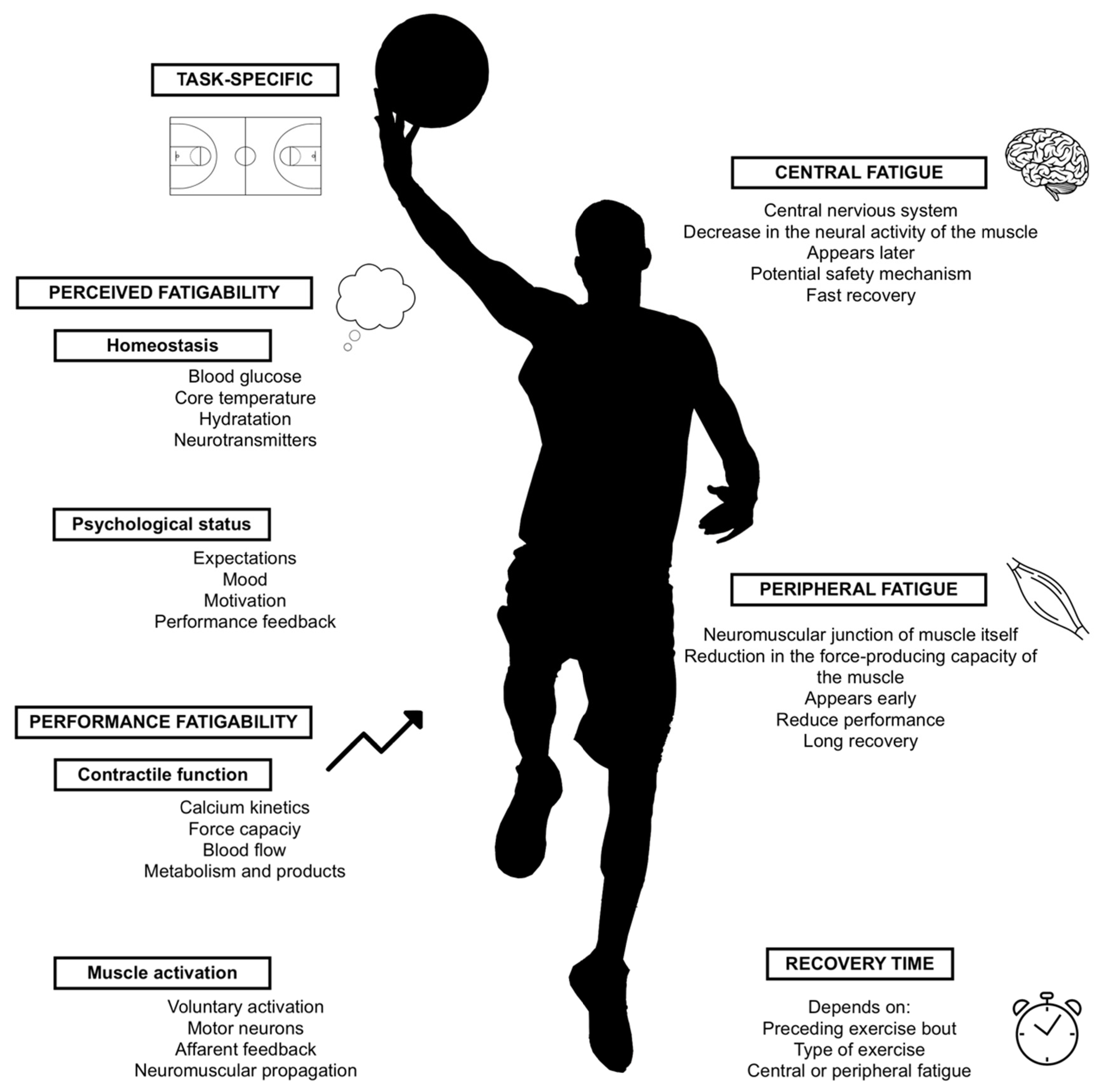
1.1. Tools to Monitor Neuromuscular Fatigue
1.1.1. Athlete Self-Report Measures: Questionnaires and Subjective Assessments of Fatigue
1.1.2. Biochemical Markers
1.1.3. Surface Electromyography
1.1.4. Sprinting Ability
1.1.5. Vertical Jump Tests
1.2. Countermovement Jump
1.3. Is Countermovement Jump a Valid Tool to Measure Neuromuscular Fatigue?
1.4. Technologies to Measure the Vertical Jump
2. Training Program and Fatigue
3. Conclusions
Author Contributions
Funding
Institutional Review Board Statement
Informed Consent Statement
Data Availability Statement
Conflicts of Interest
References
- Abbiss, C.R.; Laursen, P.B. Is Part of the Mystery Surrounding Fatigue Complicated by Context? J. Sci. Med. Sport 2007, 10, 277–279. [Google Scholar] [CrossRef] [PubMed]
- Edwards, T.; Spiteri, T.; Bonhotal, J.; Piggott, B.; Haff, G.G.; Joyce, C. Reliability and Sensitivity of Neuromuscular and Perceptual Fatigue Measures in Collegiate Men’s Basketball. J. Strength Cond. Res. 2018, 12, 1–22. [Google Scholar] [CrossRef] [PubMed]
- Taylor, K. Monitoring Neuromuscular Fatigue in High Performance Athletes; Edith Cowan University: Joolandrup, Australia, 2012. [Google Scholar] [CrossRef]
- Edwards, T.; Spiteri, T.; Piggott, B.; Bonhotal, J.; Haff, G.G.; Joyce, C. Monitoring and Managing Fatigue in Basketball. Sports 2018, 6, 19. [Google Scholar] [CrossRef] [PubMed] [Green Version]
- Enoka, R.M.; Duchateau, J. Translating Fatigue to Human Performance. Med. Sci. Sport. Exerc. 2016, 48, 2228–2238. [Google Scholar] [CrossRef] [Green Version]
- Wu, P.P.Y.; Sterkenburg, N.; Everett, K.; Chapman, D.W.; White, N.; Mengersen, K. Predicting Fatigue Using Countermovement Jump Force-Time Signatures: PCA Can Distinguish Neuromuscular versus Metabolic Fatigue. PLoS ONE 2019, 14, e0219295. [Google Scholar] [CrossRef] [Green Version]
- MacDonald, K.; Bahr, R.; Baltich, J.; Whittaker, J.L.; Meeuwisse, W.H. Validation of an Inertial Measurement Unit for the Measurement of Jump Count and Height. Phys. Ther. Sport 2017, 25, 15–19. [Google Scholar] [CrossRef]
- Walker, K.H.; Hall, D.; Hust, W. Clinical Methods: The History, Physical and Laboratory Examinations, 3rd ed.; Butterworth-Heinemann: Boston, MA, USA, 1990. [Google Scholar]
- Thomas, K.; Brownstein, C.G.; Dent, J.; Parker, P.; Goodall, S.; Howatson1, G. Neuromuscular Fatigue and Recovery after Heavy Resistance, Jump, and Sprint Training. Med. Sci. Sport. Exerc. 2018, 50, 2526–2535. [Google Scholar] [CrossRef] [Green Version]
- Gandevia, S.C. Spinal and Supraspinal Factors in Human Muscle Fatigue. Am. Physiol. Soc. 2001, 81, 1725–1789. [Google Scholar] [CrossRef]
- Woolstenhulme, M.T.; Biley, B.K.; Allsen, P.E. Vertical Jump, Anaerobic Power, and Shooting Accuracy Are Not Altered 6 Hours after Strength Training in Collegiate Women Basketball Players. J. Strength Cond. Res. 2004, 18, 422–425. [Google Scholar]
- Collins, B.W.; Pearcey, G.E.P.; Buckle, N.C.M.; Power, K.E.; Button, D.C. Neuromuscular Fatigue during Repeated Sprint Exercise: Underlying Physiology and Methodological Considerations. Br. J. Psychiatry 2018, 43, 1166–1175. [Google Scholar] [CrossRef]
- McLean, B.D.; Coutts, A.J.; Kelly, V.; McGuigan, M.R.; Cormack, S.J. Neuromuscular, Endocrine, and Perceptual Fatigue Responses during Different Length between-Match Microcycles in Professional Rugby League Players. Int. J. Sports Physiol. Perform. 2010, 5, 367–383. [Google Scholar] [CrossRef] [Green Version]
- Jones, C.M.; Griffiths, P.C.; Mellalieu, S.D. Training Load and Fatigue Marker Associations with Injury and Illness: A Systematic Review of Longitudinal Studies. Sport. Med. 2017, 47, 943–974. [Google Scholar] [CrossRef] [Green Version]
- Gathercole, R.; Sporer, B.; Stellingwerff, T.; Sleivert, G. Alternative Countermovement-Jump Analysis to Quantify Acute Neuromuscular Fatigue. Int. J. Sport. Physiol. Perform. 2015, 10, 84–92. [Google Scholar] [CrossRef]
- Spiteri, T.; Nimphius, S.; Wolski, A.; Bird, S. Monitoring Neuromuscular Fatigue in Female Basketball Players across Training and Game Performance. J. Aust. Strength Cond. 2013, 21, 73–74. [Google Scholar]
- Thomas, K.; Dent, J.; Howatson, G.; Goodall, S. Etiology and Recovery of Neuromuscular Fatigue after Simulated Soccer Match Play. Med. Sci. Sports Exerc. 2017, 49, 955–964. [Google Scholar] [CrossRef]
- Schimpchen, J.; Wagner, M.; Ferrauti, A.; Kellmann, M.; Pfeiffer, M.; Meyer, T. Can Cold Water Immersion Enhance Recovery in Elite Olympic Weightlifters? An Individualized Perspective. J. Strength Cond. Res. 2017, 31, 1569–1576. [Google Scholar] [CrossRef] [Green Version]
- Cook, C.J.; Beaven, C.M. Individual Perception of Recovery Is Related to Subsequent Sprint Performance. Br. J. Sports Med. 2013, 47, 705–709. [Google Scholar] [CrossRef]
- Jiménez-Reyes, P.; Pareja-Blanco, F.; Cuadrado-Peñafiel, V.; Ortega-Becerra, M.; Párraga, J.; González-Badillo, J.J. Jump Height Loss as an Indicator of Fatigue during Sprint Training. J. Sports Sci. 2018, 39, 1–9. [Google Scholar] [CrossRef]
- Carroll, T.J.; Taylor, J.L.; Gandevia, S.C. Recovery of Central and Peripheral Neuromuscular Fatigue after Exercise. J. Appl. Physiol. 2017, 122, 1068–1076. [Google Scholar] [CrossRef] [Green Version]
- Balsom, P.D.; Seger, J.Y.; Sjodin, B.; Ekblom, B. Maximal-Intensity Intermittent Exercise: Effect of Recovery Duration. Int. J. Sports Med. 1992, 13, 528–533. [Google Scholar] [CrossRef]
- Balsom, P.D.; Seger, J.Y.; Sjödin, B.; Ekblom, B. Physiological Responses to Maximal Intensity Intermittent Exercise. Eur. J. Appl. Physiol. Occup. Physiol. 1992, 65, 144–149. [Google Scholar] [CrossRef]
- Glaister, M. Multiple Sprint Work. Sport. Med. 2005, 35, 757–777. [Google Scholar] [CrossRef] [PubMed]
- Thorpe, R.T.; Atkinson, G.; Drust, B.; Gregson, W. Monitoring Fatigue Status in Elite Team-Sport Athletes: Implications for Practice. Int. J. Sports Physiol. Perform. 2017, 12, 27–34. [Google Scholar] [CrossRef] [PubMed] [Green Version]
- Marcora, S.M.; Staiano, W.; Manning, V. Mental Fatigue Impairs Physical Performance in Humans. J. Appl. Physiol. 2009, 106, 857–864. [Google Scholar] [CrossRef] [PubMed]
- Twist, C.; Highton, J. Monitoring Fatigue and Recovery in Rugby League Players. Int. J. Sports Physiol. Perform. 2013, 8, 467–474. [Google Scholar] [CrossRef] [PubMed] [Green Version]
- Taylor, K.-L.; Cronin, J.; Gill, N.; Chapman, D.; Newton, M. Fatigue Monitoring in High Performance Sport: A Survey of Current Trends. J. Aust. Strength Cond. 2012, 20, 12–23. [Google Scholar]
- Haddad, M.; Padulo, J.; Chamari, K. The Usefulness of Session Rating of Perceived Exertion for Monitoring Training Load despite Several Influences on Perceived Exertion. Int. J. Sport. Perform. 2014, 9, 882–993. [Google Scholar] [CrossRef] [PubMed]
- Impellizzeri, F.M.; Rampinini, E.; Coutts, A.J.; Sassi, A.; Marcora, S.M. Use of RPE-Based Training Load in Soccer. Med. Sci. Sports Exerc. 2004, 36, 1042–1047. [Google Scholar] [CrossRef]
- McGuigan, H.; Hassmén, P.; Rosic, N.; Stevens, C.J. Training Monitoring Methods Used in the Field by Coaches and Practitioners: A Systematic Review. Int. J. Sport. Sci. Coach. 2020, 15, 439–451. [Google Scholar] [CrossRef]
- Brito, J.; Hertzog, M.; Nassis, G. Do Match-Related Contextual Variables Influence Training Load in Highly Trained Soccer Players? J. Strength Cond. Res. 2016, 30, 393–399. [Google Scholar] [CrossRef]
- Morgan, W. Psychological Components of Effort Sense. Sience Sport. Exerc. Sept. 1994, 26, 1071–1077. [Google Scholar] [CrossRef]
- Haff, G.; Triplett, T. Essential of Strength Training and Conditioning; National Strength and Conditioning Association: Colorado Springs, CO, USA, 2016. [Google Scholar] [CrossRef]
- Fry, A.C.; Kraemer, W.J.; Stone, M.H.; Warren, B.J.; Fleck, S.J.; Kearney, J.T.; Gordon, S.E. Endocrine Responses to Overreaching before and after 1 Year of Weightlifting. Can. J. Appl. Physiol. 1994, 19, 400–410. [Google Scholar] [CrossRef]
- West, D.J.; Finn, C.V.; Cunningham, D.J.; Shearer, D.A.; Jones, M.R.; Harrington, B.J.; Crewther, B.T.; Cook, C.J.; Kilduff, L.P. Neuromuscular Function, Hormonal, and Mood Responses to a Professional Rugby Union Match. J. Strength Cond. Res. 2013, 28, 194–200. [Google Scholar] [CrossRef]
- Cormack, S.J.; Newton, R.U.; McGuigan, M.R. Neuromuscular and Endocrine Responses of Elite Players to an Australian Rules Football Match. Int. J. Sports Physiol. Perform. 2008, 3, 359–379. [Google Scholar] [CrossRef] [Green Version]
- Elloumi, M.; Maso, F.; Michaux, O.; Robert, A.; Lac, G. Behaviour of Saliva Cortisol [C], Testosterone [T] and the T/C Ratio during a Rugby Match and during the Post-Competition Recovery Days. Eur. J. Appl. Physiol. 2003, 90, 23–28. [Google Scholar] [CrossRef]
- Chowdhury, R.H.; Reaz, M.B.I.; Bin Mohd Ali, M.A.; Bakar, A.A.A.; Chellappan, K.; Chang, T.G. Surface Electromyography Signal Processing and Classification Techniques. Sensors 2013, 13, 12431–12466. [Google Scholar] [CrossRef]
- De Luca, C.J. The Use of Surface Electromyography in Biomechanics. J. Appl. Biomech. 1997, 13, 135–163. [Google Scholar] [CrossRef] [Green Version]
- Cifrek, M.; Medved, V.; Tonković, S.; Ostojić, S. Surface EMG Based Muscle Fatigue Evaluation in Biomechanics. Clin. Biomech. 2009, 24, 327–340. [Google Scholar] [CrossRef]
- Massó, N.; Rey, F.; Romero, D.; Gual, G.; Costa, L.; Germán, A. Surface Electromyography Applications. Apunt. Med. l’Esport 2010, 45, 121–131. [Google Scholar] [CrossRef]
- Hogrel, J.Y. Clinical Applications of Surface Electromyography in Neuromuscular Disorders. Neurophysiol. Clin. 2005, 35, 59–71. [Google Scholar] [CrossRef]
- Garrett, J.; Graham, S.R.; Eston, R.G.; Burgess, D.J.; Garrett, L.J.; Jakeman, J.; Norton, K. A Novel Method of Assessment for Monitoring Neuromuscular Fatigue in Australian Rules Football Players. Int. J. Sports Physiol. Perform. 2019, 14, 598–605. [Google Scholar] [CrossRef] [PubMed]
- Gathercole, R.; Sporer, B.; Stellingwerff, Y.; Sleivert, G.G. Comparison of the Capacity of Different Jump and Sprint Field Tests to Detect Neuromuscular Fatigue. J. Strength Cond. Res. 2015, 29, 2522–2531. [Google Scholar] [CrossRef]
- Marrier, B.; Meur, Y.L.; Robineau, J.; Lacome, M.; Couderc, A.; Hau, C. Quantifying Neuromuscular Fatigue Induced by an Intense Training Session in Rugby Sevens. Int. J. Sports Physiol. Perform. 2016, 12, 218–223. [Google Scholar] [CrossRef] [PubMed]
- Roe, G.; Darrall-Jones, J.; Till, K.; Phibbs, P.; Read, D.; Weakley, J.; Jones, B. To Jump or Cycle? Monitoring Neuromuscular Function in Rugby Union Players. Int. J. Sports Physiol. Perform. 2016, 12, 690–696. [Google Scholar] [CrossRef] [PubMed]
- Padulo, J.; Bragazzi, N.L.; Nikolaidis, P.T.; Dello Iacono, A.; Attene, G.; Pizzolato, F.; Dal Pupo, J.; Zagatto, A.M.; Oggianu, M.; Migliaccio, G.M. Repeated Sprint Ability in Young Basketball Players: Multi-Direction vs. One-Change of Direction (Part 1). Front. Physiol. 2016, 7, 1–12. [Google Scholar] [CrossRef] [PubMed] [Green Version]
- Legg, J.; Pyne, D.; Semple, S.; Ball, N. Variability of Jump Kinetics Related to Training Load in Elite Female Basketball. Sports 2017, 5, 85. [Google Scholar] [CrossRef] [Green Version]
- Heishman, A.; Miller, R.; Freitas, E.; Brown, B.; Daub, B.; Kaur, J.; Bemben, M. Monitoring External Training Loads and Neuromuscular Performance for Division I Basketball Players over the Pre-Season. Int. J. Exerc. Sci. Conf. Proc. 2020, 19, 204–212. [Google Scholar] [CrossRef]
- Markovic, G.; Dizdar, D.; Jukic, I.; Cardinale, M. Reliability and Factorial Validity of Squat and Countermovement Jump Tests. J. Strength Cond. Res. 2004, 18, 551–555. [Google Scholar] [CrossRef]
- Fitzpatrick, J.F.; Hicks, K.M.; Russell, M.; Hayes, P.R. The Reliability of Potential Fatigue-Monitoring Measures in Elite Youth Soccer Players. J. Strength Cond. Res. 2019, 12, 1–5. [Google Scholar] [CrossRef]
- Ferioli, D.; Schelling, X.; Bosio, A.; La Torre, A.; Rucco, D.; Rampinini, E. Match Activities in Basketball Games. J. Strength Cond. Res. 2020, 34, 172–182. [Google Scholar] [CrossRef]
- Slinde, F.; Suber, C.; Suber, L.; Edwén, C.E.; Svantesson, U. Test-Retest Reliability of Three Different Countermovement Jumping Tests. J. Strength Cond. Res. 2008, 22, 640–644. [Google Scholar] [CrossRef]
- Richter, A.; Räpple, S.; Kurz, G.; Schwameder, H. Countermovement Jump in Performance Diagnostics: Use of the Correct Jumping Technique. Eur. J. Sport Sci. 2012, 12, 231–237. [Google Scholar] [CrossRef]
- Byrne, P.J.; Moody, J.A.; Cooper, S.-M.; Kinsella, S. The Reliability of Countermovement Jump Performance and the Reactive Strength Index in Identifying Drop-Jump Drop Height in Hurling Players. J. Exerc. Sport. Med. 2017, 1, 1–10. [Google Scholar]
- Heishman, A.; Daub, B.; Miller, R.M.; Freitas, E.D.S.; Frantz, B.A.; Bemben, M.G. Countermovement Jump Reliability Performed with and Without an Arm Swing in NCAA Division 1 Intercollegiate Basketball Players. J. Strength Cond. Res. 2018, 34, 546–558. [Google Scholar] [CrossRef]
- Petrigna, L.; Karsten, B.; Marcolin, G.; Paoli, A.; D’Antona, G.; Palma, A.; Bianco, A. A Review of Countermovement and Squat Jump Testing Methods in the Context of Public Health Examination in Adolescence: Reliability and Feasibility of Current Testing Procedures. Front. Physiol. 2019, 10, 1384. [Google Scholar] [CrossRef] [Green Version]
- Cormack, S.J.; Newton, R.U.; McGulgan, M.R.; Doyle, T. Reliability of Measures Obtained during Single and Repeated Countermovement Jumps. Int. J. Sports Physiol. Perform. 2008, 3, 131–144. [Google Scholar] [CrossRef] [Green Version]
- Harman, E. The Effects of Arms and Countermovement on Vertical Jumping. Med. Sci. Sport. Exerc. 1990, 22, 825–833. [Google Scholar] [CrossRef] [Green Version]
- Barker, L.A.; Harry, J.R.; Mercer, J.A. Relationships between Countermovement Jump Ground Reaction Forces and Jump Height, Reactive Strength Index, and Jump Time. J. Strength Cond. Res. 2018, 32, 248–254. [Google Scholar] [CrossRef]
- Carlos-Vivas, J.; Martin-Martinez, J.P.; Hernandez-Mocholi, M.A.; Perez-Gomez, J. Validation of the IPhone App Using the Force Platform to Estimate Vertical Jump Height. J. Sports Med. Phys. Fitness 2018, 58, 227–232. [Google Scholar] [CrossRef]
- Heishman, A.; Brown, B.; Daub, B.; Miller, R.; Freitas, E.; Bemben, M. The Influence of Countermovement Jump Protocol on Reactive Strength Index Modified and Flight Time: Contraction Time in Collegiate Basketball Players. Sports 2019, 7, 37. [Google Scholar] [CrossRef] [Green Version]
- Cohen, D.; Burton, A.; Wells, C.; Taberner, M.; Diaz, M.A.; Graham-Smith, P. Single vs. Double Leg Jump Tests. Aspetar Sport. Med. J. 2020, 9, 34–41. [Google Scholar]
- Tomasevicz, C.L.; Hasenkamp, R.; Ransone, J.W.; Jones, D. Optimal Depth Jump Height Quantified as Percentage of Athlete Stature. J. Hum. Sport Exerc. 2019, 15, 1–10. [Google Scholar] [CrossRef]
- Lees, A.; Vanrenterghem, J.; De Clercq, D. Understanding How an Arm Swing Enhances Performance in the Vertical Jump. J. Biomech. 2004, 37, 1929–1940. [Google Scholar] [CrossRef] [PubMed]
- Hara, M.; Shibayama, A.; Takeshita, D.; Hay, D.C.; Fukashiro, S. A Comparison of the Mechanical Effect of Arm Swing and Countermovement on the Lower Extremities in Vertical Jumping. Hum. Mov. Sci. 2008, 27, 636–648. [Google Scholar] [CrossRef] [PubMed]
- Ripley, N.; Mcmahon, J.J. Validity and Reliability of the PUSH Wearable Device to Measure Velocity and Power during Loaded Countermovement Jumps. In Proceedings of the National Strength and Conditioning Association National Conference, New Orleans, LA, USA, 6–9 July 2016. [Google Scholar]
- Claudino, J.G.; Cronin, J.; Mezêncio, B.; McMaster, D.T.; McGuigan, M.; Tricoli, V.; Amadio, A.C.; Serrão, J.C. The Countermovement Jump to Monitor Neuromuscular Status: A Meta-Analysis. J. Sci. Med. Sport 2017, 20, 397–402. [Google Scholar] [CrossRef] [PubMed]
- Pino-Ortega, J.; García-Rubio, J.; Ibáñez, S.J. Validity and Reliability of the WIMU Inertial Device for the Assessment of the Vertical Jump. PeerJ 2018, 2018, e4709. [Google Scholar] [CrossRef]
- Attia, A.; Dhahbi, W.; Chaouachi, A.; Padulo, J.; Wong, D.P.; Chamari, K. Measurement Errors When Estimating the Vertical Jump Height with Flight Time Using Photocell Devices: The Example of Optojump. Biol. Sport 2017, 34, 63–70. [Google Scholar] [CrossRef] [PubMed]
- Casartelli, N.; Müller, R.; Maffiuletti, N.A. Validity and Reliability of the Myotest Accelerometric System for the Assessment of Vertical Jump Height. J. Strength Cond. Res. 2010, 24, 3186–3193. [Google Scholar] [CrossRef]
- Choukou, M.-A.; Laffaye, G.; Taiar, R. Reliability and Validity of an Accelerometric System for Assessing Vertical Jumping Performance. Biol. Sport 2014, 31, 55–62. [Google Scholar] [CrossRef]
- Stanton, R.; Wintour, S.-A.; Kean, C.O. Validity and Intra-Rater Reliability of MyJump App on IPhone 6s in Jump Performance. J. Sci. Med. Sport 2017, 20, 518–523. [Google Scholar] [CrossRef]
- McMahon, J.J.; Suchomel, T.J.; Lake, J.P.; Comfort, P. Understanding the Key Phases of the Countermovement Jump Force-Time Curve. Strength Cond. J. 2018, 40, 96–106. [Google Scholar] [CrossRef] [Green Version]
- Ferioli, D.; Bosio, A.; Bilsborough, J.C.; La Torre, A.; Tornaghi, M.; Rampinini, E. The Preparation Period in Basketball: Training Load and Neuromuscular Adaptations. Int. J. Sports Physiol. Perform. 2018, 13, 991–999. [Google Scholar] [CrossRef]
- Linthorne, N.P. Analysis of Standing Vertical Jumps Using a Force Platform. Am. J. Phys. 2001, 69, 1198–1204. [Google Scholar] [CrossRef] [Green Version]
- Borges, N.; Borges, L.; Dias, J.; Wentz, M.; Da Silva Mattos, D.; Petry, R.; Domenech, D. Validity of a New Contact Mat System for Evaluating Vertical Jump. Motriz. Rev. Educ. Fis. 2011, 17, 26–32. [Google Scholar] [CrossRef]
- Leard, J.S.; Cirillo, M.A.; Katsnelson, E.; Kimiatek, D.A.; Miller, T.W.; Trebincevic, K.; Garbalosa, J.C.; Leard, A.; Cirillo, M.; Katsnelson, E.; et al. Validity of Two Alternative Systems for Measuring Vertical Jump Height. J. Strength Cond. Res. 2007, 21, 1296–1299. [Google Scholar]
- Glatthorn, J.F.; Gouge, S.; Nussbaumer, S.; Stauffacher, S.; Imperllizzeri, F.M.; Maffiuletti, N.A. Validity and Realibility of Optojump Photoelectric Cells for Estimating Vertical Jump Height. J. Strength Cond. Res. 2011, 25, 556–560. [Google Scholar] [CrossRef]
- Balsalobre-Fernández, C.; Glaister, M.; Lockey, R.A. The Validity and Reliability of an IPhone App for Measuring Vertical Jump Performance. J. Sports Sci. 2015, 33, 1574–1579. [Google Scholar] [CrossRef]
- Steinman, D.; Shirley, M.; Fuller, M.R.C. Validity and Reliability of Devices Measuring Countermovement Vertical Jump Performance. Dep. Heal. Hum. Perform. Athl.—Hum. Perform. Lab. Abstr. 2018, 4, 1. [Google Scholar] [CrossRef] [Green Version]
- Withmer, T.D.; Fry, A.C.; Forsythe, C.M.; Andre, M.J.; Lane, M.T.; Hudy, A.; Honnold, D.E. Accuracy of a Vertical Jump Contact Mat for Determining Jump Height and Flight Time. J. Strength Cond. Res. 2015, 29, 877–881. [Google Scholar] [CrossRef]
- Rago, V.; Brito, J.; Figueiredo, P.; Carvalho, T.; Fernandes, T.; Fonseca, P.; Rebelo, A. Countermovement Jump Analysis Using Different Portable Devices: Implications for Field Testing. Sports 2018, 6, 91. [Google Scholar] [CrossRef] [Green Version]
- Stanton, R.; Kean, C.O.; Scanlan, A.T. My Jump for Vertical Jump Assessment. Br. J. Sports Med. 2015, 49, 1157–1158. [Google Scholar] [CrossRef] [PubMed]
- Sharp, A.; Cronin, J.; Neville, J. Using Smartphones for Jump Diagnostics: A Brief Review of the Validity and Reliability of the My Jump App. Strength Cond. J. 2019, 41, 96–107. [Google Scholar] [CrossRef]
- Lake, J.; Augustus, S.; Austin, K.; Mundy, P.; McMahon, J.; Comfort, P.; Haff, G. The Validity of the Push Band 2.0 during Vertical Jump Performance. Sports 2018, 6, 140. [Google Scholar] [CrossRef] [PubMed] [Green Version]
- Gallardo-Fuentes, F.; Gallardo-Fuentes, J.; Ramírez-Campillo, R.; Balsalobre-Fernández, C.; Martínez, C.; Caniuqueo, A.; Cañas, R.; Banzer, W.; Loturco, I.; Nakamura, F.Y.; et al. Intersession and Intrasession Realiability and Validity of the My Jump App for Measuring Different Jump Actions in Trained Male and Female Athletes. J. Strength Cond. Res. 2015, 30, 2049–2056. [Google Scholar] [CrossRef]
- Walsh, M.S.; Ford, K.R.; Bangen, K.J.; Myer, G.D.; Hewett, T.E. The Validation of a Portable Force Plate for Measuring Force-Time Data during Jumping and Landing Tasks. J. Strength Cond. Res. 2006, 20, 730–734. [Google Scholar]
- Farias, D.L.; Teixeira, T.G.; Madrid, B.; Pinho, D.; Boullosa, D.A.; Prestes, J. Reliability of Vertical Jump Performance Evaluated with Contact Mat in Elderly Women. Scand. Soc. Clin. Physiol. Nucl. Med. 2013, 33, 1–5. [Google Scholar] [CrossRef]
- Castagna, C.; Ganzetti, M.; Ditroilo, M.; Giovannelli, M.; Rocchetti, A.; Manzi, V. Concurrent Validity of Vertical Jump Performance Assessment Systems. J. Strength Cond. Res. 2013, 27, 761–768. [Google Scholar] [CrossRef]
- Torres-Ronda, L.; Schelling, X. Critical Process for the Implementation of Technology in Sport Organizations. Strength Cond. J. 2017, 39, 54–59. [Google Scholar] [CrossRef]
- Wee, J.F.; Lum, D.; Lee, M.; Roman, Q.; Ee, I.; Suppiah, H.T. Validity and Reliability of Portable Gym Devices and an IPhone App to Measure Vertical Jump Performance. Sport Perform. Sci. Rep. 2018, 44, 1–5. [Google Scholar]
- Charlton, P.C.; Kenneally-Dabrowski, C.; Sheppard, J.; Spratford, W. A Simple Method for Quantifying Jump Loads in Volleyball Athletes. J. Sci. Med. Sport 2017, 20, 241–245. [Google Scholar] [CrossRef]
- Borges Moreira, A.; Bacchi, R.; Finotti, R.L.; Ramos, M.; Lopes, C.R.; Aoki, M.S. Validation of the VERT Wearable Jump Monitor Device in Elite Youth Volleyball Players. Biol. Sport 2017, 34, 239–242. [Google Scholar] [CrossRef] [Green Version]
- Halson, S.L. Monitoring Training Load to Understand Fatigue in Athletes. In Sports Medicine; Springer International Publishing: Berlin/Heidelberg, Germany, 1 November 2014; pp. 139–147. [Google Scholar] [CrossRef] [Green Version]
- Alderman, R.B. Influence of Local Fatigue on Speed and Accuracy in Motor Learning. Res. Q. Am. Assoc. Heal. Phys. Educ. Recreat. 1965, 36, 131–140. [Google Scholar] [CrossRef]
| Study | Participants | ICC | CV% | Cronbach | |
|---|---|---|---|---|---|
| Markovic et al. [51] | n = 93, health collegiate athletes | 0.98 | 2.8 | 0.98 | |
| Slinde et al. [54] | n = 30, recreational athletes | 0.93 | 0.96 | ||
| Richter et al. [55] | n = 324, secondary school athletes | 0.96 | 4.4 | ||
| Gathercole et al. [15] | n = 11, college-level team-sport athletes | Intersession | 4.9 | ||
| Intrasession | 5.3 | ||||
| Byrne et al. [56] | n = 18, hurling players | 0.95 | 5.5 | 0.95 | |
| Heishman et al. [57] | n = 22, NCAA Division 1 collegiate basketball players | Intersession | 0.96 | 4.7 | 0.99 |
| Intrasession | 0.97 | 3.8 | 0.99 | ||
| Fitzpatrick et al. [52] | n = 17, elite youth soccer players | 0.88 | 4.8 |
| Weighting Phase | Athlete is Required to Stand as Still as Possible for 1 s. |
|---|---|
| Unweighting phase | Athlete starts the countermovement with a combined flexion of the hip, knees, and ankles. |
| Braking phase | Athlete decelerates their center of mass (COM), which coincides with the deepest part of the squat. The leg extensor muscle-tendon units are actively stretching to decelerate the body mass. |
| Propulsion phase | Athlete extends hips, knees, and ankles. Positive COM velocity is achieved. |
| Flight phase | Athlete leaves the floor (it starts at the take-off and ends at the touchdown). Maximal positive COM displacement. |
| Landing phase | COM velocity deceleration Athlete “absorbs” the landing by flexing the ankles, knees, and hips. |
| Technologies | Pros | Cons | Suitability in Team Sports | |
|---|---|---|---|---|
| Force platforms |
|  | ||
| Contact mats |
| 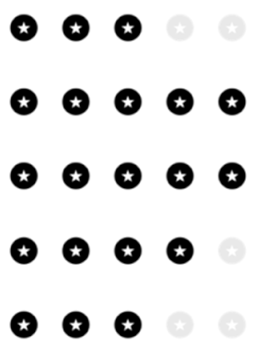 | ||
| Photoelectric cells system |
|  | ||
| Local positioning systems |
| 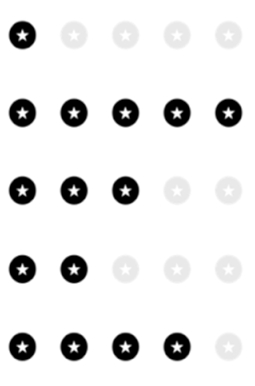 | ||
| Phone apps |
| 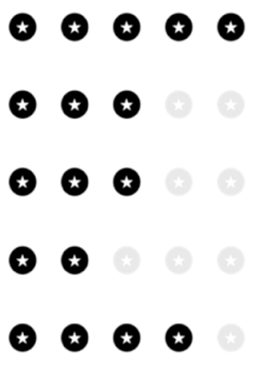 | ||
| Accelerometers |
| 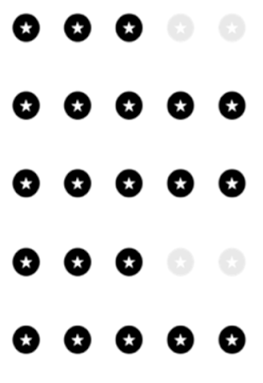 | ||
Publisher’s Note: MDPI stays neutral with regard to jurisdictional claims in published maps and institutional affiliations. |
© 2022 by the authors. Licensee MDPI, Basel, Switzerland. This article is an open access article distributed under the terms and conditions of the Creative Commons Attribution (CC BY) license (https://creativecommons.org/licenses/by/4.0/).
Share and Cite
Alba-Jiménez, C.; Moreno-Doutres, D.; Peña, J. Trends Assessing Neuromuscular Fatigue in Team Sports: A Narrative Review. Sports 2022, 10, 33. https://doi.org/10.3390/sports10030033
Alba-Jiménez C, Moreno-Doutres D, Peña J. Trends Assessing Neuromuscular Fatigue in Team Sports: A Narrative Review. Sports. 2022; 10(3):33. https://doi.org/10.3390/sports10030033
Chicago/Turabian StyleAlba-Jiménez, Claudia, Daniel Moreno-Doutres, and Javier Peña. 2022. "Trends Assessing Neuromuscular Fatigue in Team Sports: A Narrative Review" Sports 10, no. 3: 33. https://doi.org/10.3390/sports10030033
APA StyleAlba-Jiménez, C., Moreno-Doutres, D., & Peña, J. (2022). Trends Assessing Neuromuscular Fatigue in Team Sports: A Narrative Review. Sports, 10(3), 33. https://doi.org/10.3390/sports10030033







